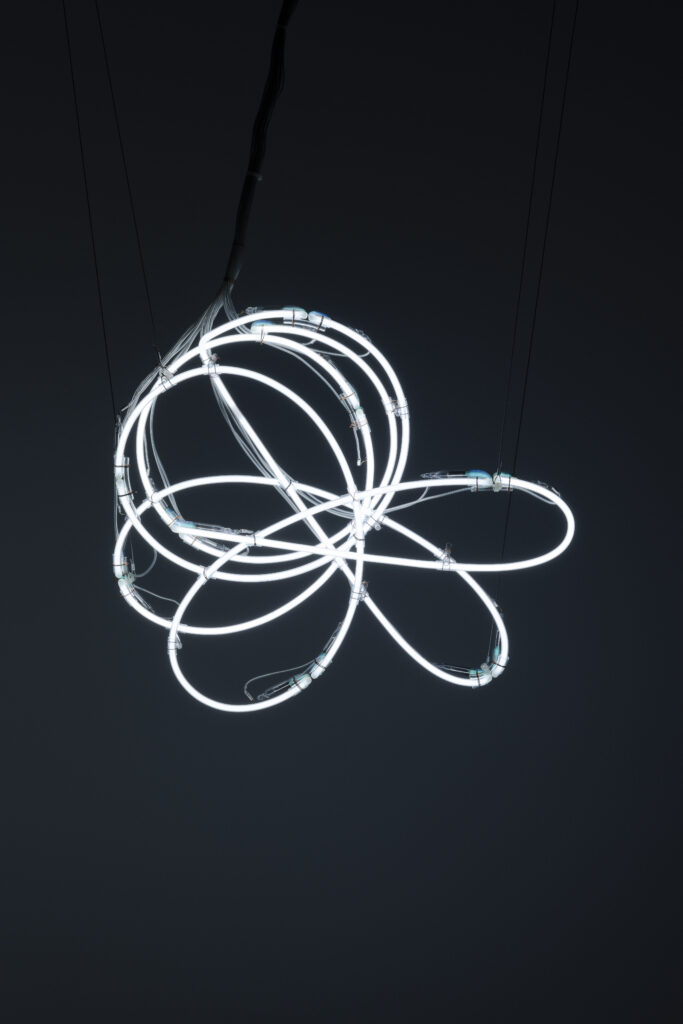0=1 –pole stars (BC100000-AD100000) | 2021
neon light, glass
H500 W500 D300 (mm) [5 pieces]
All things are in flux, and nothing can be unchanging.
Polaris, located at the celestial North Pole, is nicknamed the “immovable star” and is generally recognized as one whose position as seen from the earth does not change. However, due to the influence of various forces in the universe, the positional relationship between the earth and Polaris has continued to change little by little over the years. The current Polaris is Polaris (Alpha Ursa Minor), but other stars have replaced Polaris in the past and in the future. These include Vega (Alpha Lyrae), Thuburn (Alpha Lyrae), Polaris (Alpha Ursa Minor), Aldera Minor (Alpha Cepheus), and Deneb (Alpha Cygnus). These five stars are the alpha stars that could be the North Star in the past, present, and future. This work simulates the changes in the position of Polaris visible from the ground over a period of 200,000 years, from 100,000 BC to 100,000 AD, and reproduces the light traces of these transitions using lines and neon lights. This simulation shows the changes due to the effects of the earth’s diurnal, precessional, and precessional motions, but in the actual universe, many other factors are involved, and the changes may be more complex. Even the positions of stars, which at first glance seem to remain unchanged, are revealed to be continuously changing when observed along a long time axis. In this way, the concepts of “stillness” and “motion” can represent the same event, albeit from different perspectives.











